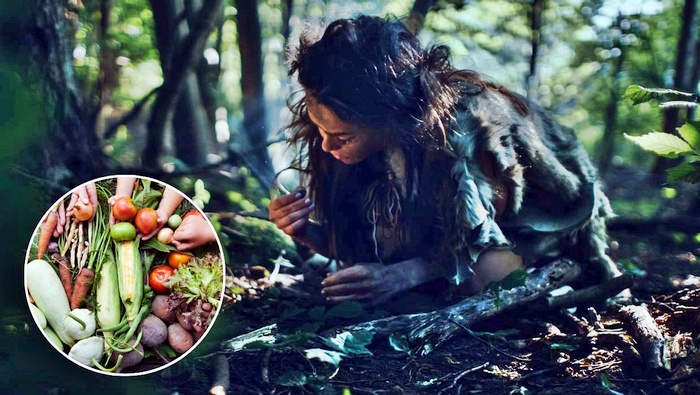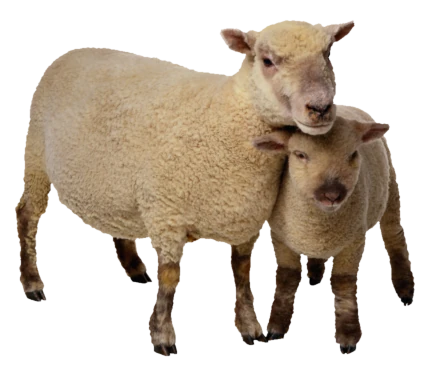Authors behind a new study say their discovery that cavemen ate mostly plant-based debunks the largely meat-based paleo diet.
The paleo diet was designed to mimic the way people ate until 2000 BC, according to the Harvard School of Public Health.
Also known as the caveman or Stone Age diet, the paleo diet is based on what people consumed during the Paleolithic period, theorising that human genetics and anatomy have not changed much since then.
It is based around lean meats, fish, fruits, vegetables, nuts, and seeds.
The fruit and vegetables that are included in the diet are low-glycemic, and the majority of the diet is protein.
However, a new study, titled Isotopic evidence of high reliance on plant food among Later Stone Age hunter-gatherers at Taforalt, Morocco, suggests that meat was not the primary source of protein at that time.
[Paleo meals don’t need to include loads of meat, and this study shows that an authentic ‘caveman diet’ probably shouldn’t.]
Debunking the paleo diet
The study, which was published by the Nature Ecology & Evolution Journal, analysed the chemical signatures of the Paleolithic group, the Iberomaurusians, within bones and teeth.
[Researchers used stable isotope analysis, looking at the nitrogen and zinc isotopes in teeth enamel and collagen.]
This allowed them to assess how much meat the Iberomaurusians ate.
Meanwhile, using carbon isotopes allowed them to find out whether their primary source of protein was meat or fish.
Additionally, according to researchers, they saw an abundance of cavities in the Iberomaurusian remains, which were buried in the Taforalt caves.
They say these cavities indicate the consumption of fermentable starchy plants which could include beets, corn, rye, and cassava.
[Researchers were able to determine the nature of the Iberomaurusians’ diet by analysing the bones and teeth.]
Plant matter in the diet
Zineb Moubtahij, the study’s lead author, said: “Our analysis showed that these hunter-gatherer groups, they included an important amount of plant matter, wild plants to their diet, which changed our understanding of the diet of pre-agricultural populations.”
Klervia Jaouen, a co-author of the study, described the ‘high proportion of plants in the diet of a pre-agricultural population’ as ‘unusual’.
She added that the study marks the first time that using isotope techniques has revealed the ‘significant plant-based component in a Palaeolithic diet’.
However, the study notes that the findings are not indicative of the protein intake of all cavemen.
It’s time to bust myths about cavemen diets and canine teeth. Get the facts and learn.
Humans haven’t always eaten meat
Dr. T. Colin Campbell is a professor at Cornell University in New York, and author of The China Study.
He claims the eating of meat is a relatively recent phenomenon in human development, saying: “The birth of agriculture only started about 10,000 years ago at a time when it became considerably more convenient to herd animals.
“This is not nearly as long as the time that fashioned our basic biochemical functionality (at least tens of millions of years) and which functionality depends on the nutrient composition of plant-based foods.”
Before the birth of modern agriculture, humans had to hunt all prey.
But Dr Neal D. Barnard, founder and president of the Physicians Committee for Responsible Medicine claims humans lack the basic abilities to be good hunters. “We are not quick, like cats, hawks or other predators. It was not until the advent of arrowheads, hatchets and other implements that killing and capturing prey became possible.”
And when it comes to eating flesh, anthropologist Dr Richard Leakey says: “You can’t tear flesh by hand, you can’t tear hide by hand.”
Lacking the right equipment
In addition, animal rights charity Peta claims we don’t have the right teeth.
According to a Peta spokesperson: “Humans have short, soft fingernails and small, dull canine teeth. All true carnivores have sharp claws and large canine teeth that are capable of tearing flesh without the help of knives and forks.
“Real carnivores’ jaws move only up and down, enabling them to tear chunks of flesh from their prey. Humans can move their jaws up and down and from side to side, and we also have flat molars (which carnivores lack), allowing us to grind up fruit and vegetables with our back teeth like herbivores do.”

